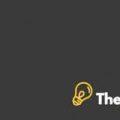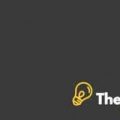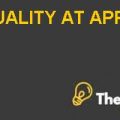
Mount Everest-1996 Case Solution
PROBLEM STATEMENT:
“The expedition guiding firms have to sort out a way through which they can ensure that situations of catastrophe which happened,do not happen again, as the consequences can be fatal.”
ISSUES:
The members of the teams were formed by Adventure Consultants and Mountain Madness; both of these team members made mistakes. The fact that the members panicked and made mistakes during the expedition is not something which was not expected, the main issue lied when both the expedition leader panicked and made mistakes when presented with sunk costs like wasted money, time and efforts.
It is usually expected by groups and teams to make mistakes and panic in such situation or new and harsh environments, but the mistakes of the expedition leaders were the real issue. The leadership style of these two individual caused serious problems on the expedition.
The formation of the groups by the leaders of both the organizations lacked considering of unfit or non-expert members. The teams formed by the two leaders did not go through any process through which they could have been able to analyze the ability of the member with respect to their performance or body capacity in the harsh natural environment.
The teams formed by the members were all together having a different goal than the goals of the organization leading them to the expedition. There was a significant difference in the perception of the team members, guide and the team leaders.
The leaders, Hall and Fischer, foolishly ignored and underestimated the challenges and difficulties offered by Mount Everest. Both the leaders over confidently promised something which could easily be destroyed and stormed by the nature. The leaders did not consider the possible changes, which could occur to the weather of the harsh location of Mount Everest and how badly it could affect or even end their expedition. These acts of the leaders are a clear indication regarding the trait of overconfidence in their personality, and how it affected their effectualness in the expedition of the members. These leaders heavily depended upon the weather condition to be perfect for their expedition and expected the weather to remain parallel with their organizational and individual goals.
Another main issue that led the teams towards a failed expedition was clearly their poor and weak working relationship. The teams that were formed by the leaders and the organization, majority of them were meeting for the first time and rarely any of them had met each other before. In addition to this, the members of both the teams were not sure or briefed about their specific role in the expedition and how would they be contributing towards making the expedition successful. Not only they were not aware of their role and responsibility in the expedition but they were also not motivated enough to share a better solution or idea regarding the faced issue or problem by the team members as they were placed lower in the chain of command by the leaders of both the organization. Sherpa are the locals of Khumbu, a region of Nepal. These are people who have been living in mountains and are aware and compatible to these conditions in comparison to any of the team members, even the leaders. The leaders of the expedition did not utilize the much needed capabilities and expertise of these people. Groups formed by the leaders did not even step ahead of the forming phase.
Team members and leaders on the expedition lacked group decision making skill, despite the fact that the group had an adequate information and knowledge pool, which they could have effectively and efficiently utilized in making decisions.Collaborative and cooperative group decision making would have significantly affected their expedition positively and the results might have been different.
These traits of the team members and leaders led the expedition towards a number of difficulties and issues as follows;
• Reduced level of feedback from the group members to the leaders;which differentiated the guides and team members from the leaders of the expedition. The teams were no more able to work as a single unit.
• The leaders were themselves not following the rules that were set by them;this created a sense of ease and convenience for the team members to break rule and standards mentioned by the guides and the leaders. Not abiding such rules heavily affected their expedition.
• Lack of Communication;weather conditions on Everest are very vulnerable and change rapidly.In such changing conditions the group members were not able to communicate properly as the supplied amount of radios was not enough for the whole expedition. The members could not communicate live.In case of any change in the weather, the changed strategies and adapted quick responses could not be communicated to all the group members.
• Groups, guides and leaders were reluctant to accept any delays or defeats;a number of the members of the team had attempted to climb the summit in the past and were not successful in it.They were more than motivated to accomplish their objective at any cost without many chances of failing. It would be safe to say that the members and other individuals were negatively motivated and they were not willing to let go of the goal of reaching the top this time. The groups were reluctant to move back or take a step back if an uncontrollable situation occurred, even if the risk became too obvious and possible. These activities and behavior of the member clearly indicate that the members, guides and leaders had an escalated level of commitment related to the expedition and they were not going to accept failure in this attempt of reaching the top of the mountain as they had failed in the past.............
This is just a sample partial case solution. Please place the order on the website to order your own originally done case solution.













